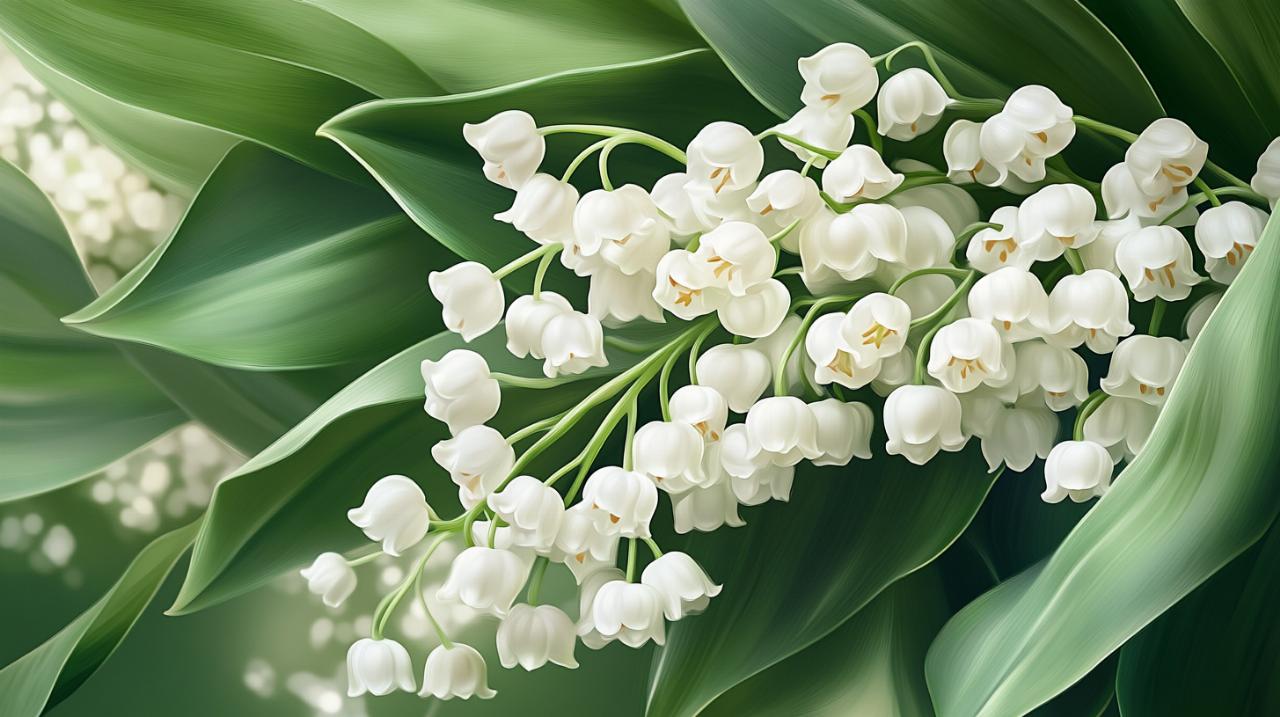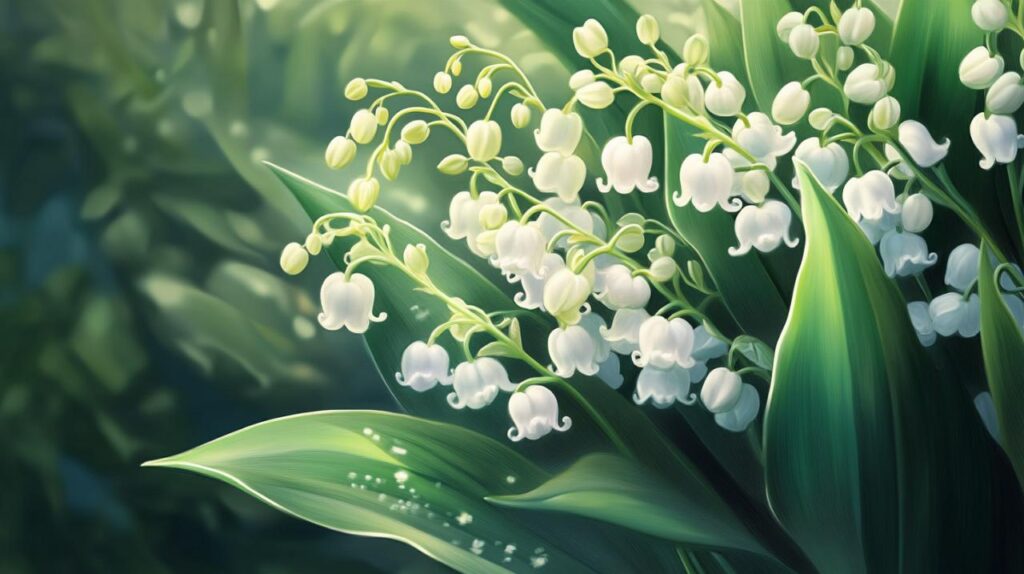The delicate white blooms of lily of the valley have long captivated hearts across the British Isles and beyond, carrying with them centuries of tradition and symbolism. This enchanting flower, known scientifically as Convallaria majalis, has woven itself into the fabric of cultural celebrations, romantic gestures, and springtime rituals. From royal coronations to May Day festivities, the lily of the valley continues to serve as a meaningful gift that speaks volumes without uttering a single word. Those seeking to understand the deeper significance behind presenting this charming bloom will discover a rich tapestry of history, folklore, and sentiment that makes it far more than just another floral arrangement.
The Rich History and Symbolism of Lily of the Valley
Ancient Origins and Cultural Roots of the Delicate Bloom
The lily of the valley traces its botanical heritage to the temperate woodlands of Eurasia, where it has flourished in shaded gardens and forest floors for millennia. This modest plant, reaching heights of merely six to twelve inches, produces its characteristic white bell-shaped flowers for approximately three to four weeks during late spring, earning it the affectionate nicknames May lily and May bells. The scientific designation Convallaria majalis translates roughly to that which belongs to May, reinforcing its strong association with the fifth month of the year. Throughout European history, this unassuming flower has occupied an esteemed position in both spiritual and secular traditions, appearing in religious ceremonies, artistic works, and literary references across the centuries.
In Greek mythology, the lily of the valley found itself connected to Hera, the divine guardian of women and family life, where it came to symbolise marital loyalty and devotion. This association established the flower as an emblem of steadfast commitment, a meaning that would resonate through the ages. Within Christian tradition, the plant became intertwined with the Virgin Mary, with legends suggesting that the delicate white blooms sprang from her tears shed at the crucifixion, thereby representing both maternal sorrow and divine grace. This religious significance elevated the flower beyond mere botanical curiosity to a symbol of redemption and spiritual purity. The lily of the valley even achieved national recognition, becoming the chosen floral emblem of Finland, where it represents the character and landscape of the Nordic nation. Such widespread cultural adoption speaks to the universal appeal of this diminutive yet powerful bloom.
The Language of Flowers: What Lily of the Valley Represents
In the Victorian language of flowers, that intricate system of botanical communication where every bloom carried specific meaning, lily of the valley conveyed the message of return to happiness. This interpretation made the flower particularly suitable for moments of reconciliation, recovery, or new beginnings, when one wished to express hope for brighter days ahead. The flower simultaneously embodies humility and purity, two virtues highly prized in traditional British society, making it an appropriate gift for individuals of refined sensibility. The white petals themselves have long been associated with chastity and innocence, qualities that made the bloom particularly fitting for bridal bouquets and ceremonies marking life’s most sacred transitions.
Queen Elizabeth herself reportedly cherished lily of the valley as her favourite flower, and when she was crowned in nineteen fifty-three, her coronation bouquet prominently featured these beloved blooms. This royal endorsement cemented the flower’s status as a symbol of elegance and refinement throughout the Commonwealth. Beyond royal circles, the plant has been credited with protective powers in various folk traditions, with believers maintaining that it could ward off evil spirits and bring good fortune to households that cultivated it. The flower also serves as the birth bloom for those born in May, sharing this designation with hawthorn, and represents the zodiac sign Gemini. Its appearance in perfumes, garden designs, and artistic compositions throughout the Renaissance and beyond demonstrates its enduring appeal across multiple spheres of cultural expression. For those exploring more about traditional botanical symbolism and gifting customs, resources such as https://www.trend-lab.es/ offer valuable insights into contemporary interpretations of these timeless practices.
Lily of the Valley as the Perfect Gift for Special Occasions

Weddings and Romantic Celebrations: A Symbol of Purity and Devotion
The lily of the valley has established itself as an exceptionally meaningful choice for wedding ceremonies and romantic occasions, where its symbolism of purity, devotion, and marital loyalty resonates deeply with couples embarking on their shared journey. The flower’s association with return to happiness makes it particularly appropriate for anniversary celebrations, especially those marking the renewal of commitment after challenging periods. Its delicate appearance belies a hardy nature, as the plant thrives in hardiness zones three through seven, offering a metaphor for relationships that endure through various seasons and conditions. The modest size and understated elegance of the blooms make them suitable for both grand formal arrangements and intimate personal bouquets, adapting gracefully to the scale and tone of any celebration.
Throughout British traditions, the lily of the valley has featured in bridal bouquets for generations, prized not only for its symbolic weight but also for its enchanting fragrance, which perfumes entire gardens when the plant is in full bloom. This scent has inspired countless perfumers to attempt capturing its essence in bottles, though many argue that nothing quite matches the natural aroma of fresh blooms. When presented as a gift during romantic celebrations, the flower communicates trust, sweetness, and the promise of happiness, making it an eloquent alternative to more conventional choices. However, it bears noting that all parts of the plant contain cardiac glycosides, making them poisonous if ingested, which requires appropriate caution when the blooms are present around children or pets. This hidden danger serves as a reminder that even the most beautiful traditions carry responsibilities that must be observed with care.
Spring festivities and may day traditions across britain
The tradition of gifting lily of the valley reaches its annual pinnacle on the first of May, a practice with particularly strong roots in French culture that has influenced British springtime celebrations as well. This custom allegedly began during the Renaissance period when King Charles IX of France received a sprig of lily of the valley as a good luck charm in fifteen sixty-one and was so delighted that he began presenting the flowers to ladies of the court each subsequent May. By the late nineteenth century, the French singer Félix Mayol had adopted the flower as his personal emblem, wearing it during stage performances and further popularising its association with good fortune and joy. Parisian couturiers joined the tradition around nineteen hundred, presenting sprigs to both staff and customers as tokens of appreciation and seasonal celebration.
The practice received official recognition in France when Marshal Pétain designated May first as Labour Day and Social Concord Day in nineteen forty-one, intentionally replacing the red eglantine with lily of the valley as the day’s symbolic flower. By nineteen forty-eight, May Day had become a paid public holiday, and the tradition of exchanging lilies of the valley, known as La Fête du Muguet, was firmly established. Though this custom originated across the Channel, British gardeners and flower enthusiasts have embraced the lily of the valley for their own May Day observances, particularly in regions where Celtic and British folklore already celebrated hawthorn during spring festivities. The flower’s message of protection, hope, and the end of winter aligns perfectly with traditional British welcomes to the warmer season, when communities gather to mark the earth’s renewal and the return of abundance.
For those cultivating lily of the valley in their own gardens, the plant prefers shady areas with acidic to neutral soil, thriving in conditions that mirror its native woodland habitat. The roots benefit from being dug up and divided every few years to encourage vigorous new growth, ensuring that the plant continues to produce its characteristic cascades of white bells season after season. Whether presented as cut flowers in a simple posy or given as potted plants that will naturalise in a recipient’s garden, lily of the valley carries with it the weight of centuries of tradition, the blessing of good fortune, and the timeless message that happiness awaits just around the corner. This makes it an ideal gift for spring celebrations, housewarmings, and any occasion where one wishes to share warmth, joy, and the promise of better days ahead.

